Matt and Devin's guide to Desktop Operating Systems


Linux, specifically the Linux Kernel, is a free, open-source operating system originally written by Linus Torvalds as a UNIX alternative that worked on personal computer hardware and didn't use a restrictive license. Most people use what is known as GNU/Linux which uses the GNU suite of applications on top of the Linux kernel and its drivers. As it uses the GNU Public License (GPL) as its software licensing system, it is freely available, open for modifications and improvements, and is highly flexible and customizable. It is so customizable, in fact, that if you can think of it, there is a distribution for it. From specialized, embedded systems to servers to desktops to phones, there is a version that will fit your needs.
Usually, people tend to think that Linux is for the tech-savvy, scientist, and/or programmer types. This is only partly true. In truth, while Linux is great for scientists and programmers, Linux can be for everybody. There are many distributions which can appeal to different types of users. There are some which have a look and feel almost the same as macOS. Some look like Windows. Some look like their own systems. There are Linux distributions for people who aren't intimidated by the command line and are comfortable with jargon like GNU and Kernel, but there are also distributions for people who are relatively new to using computers.
You may not know this, but if you have an Android phone, you use Linux. Android Inc, under Google's guidance, picked the Linux kernel as a stable, secure base for the Android operating system. The computers that are showing you this website are also running Linux. Most websites are hosted on Linux servers since they can easily be configured as secure web hosting servers. You can even find Linux in digital pianos, TiVo boxes, space ships, and more!
Linux is very customizable and there is no good way to showcase all the ways it can look. The distro-specific pages will not have screenshots. Instead, posted here are a few examples:
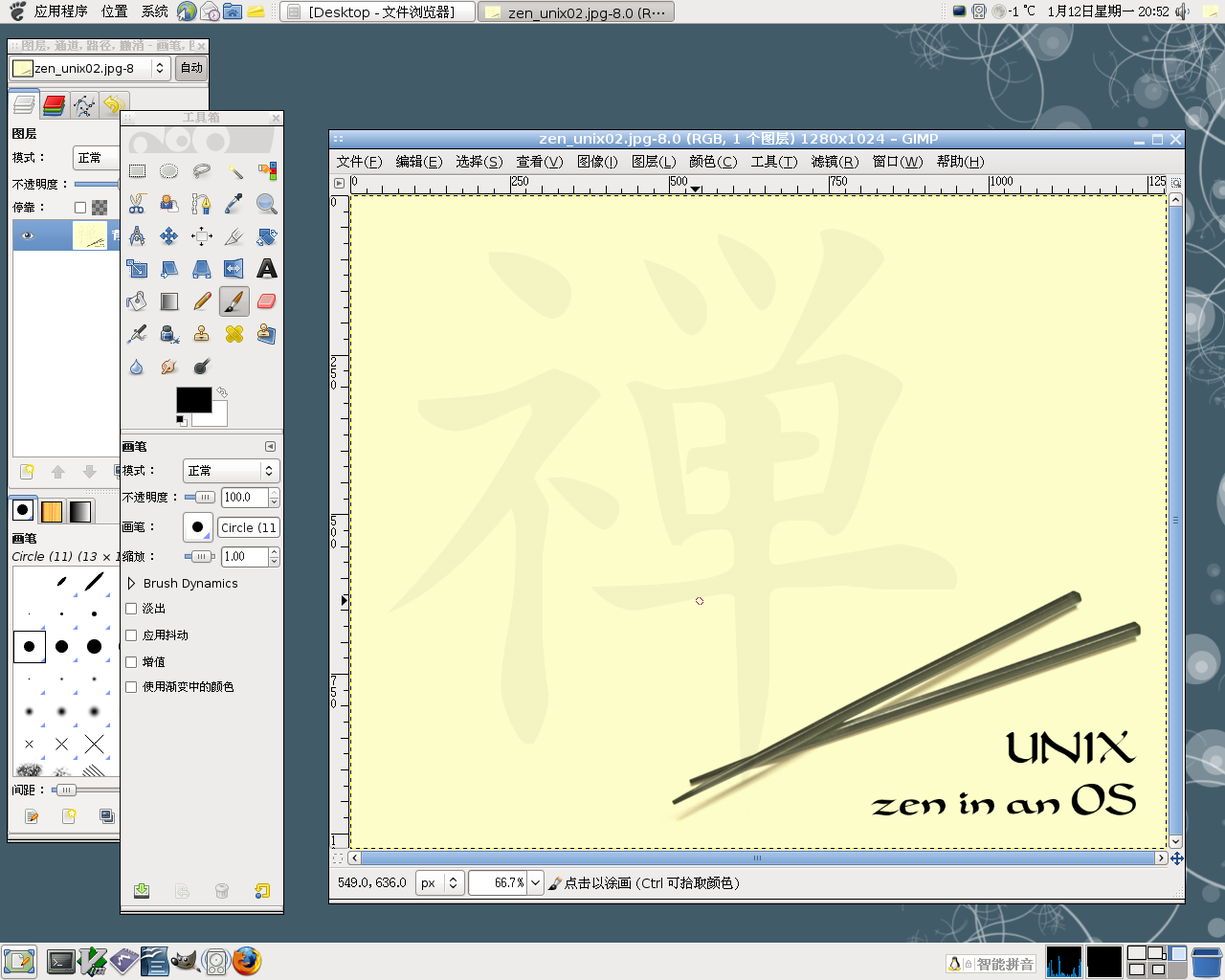
Gnome 2.24 on FreeBSD showing off GIMP and several Gnome applets (image credit: FreeBSD)
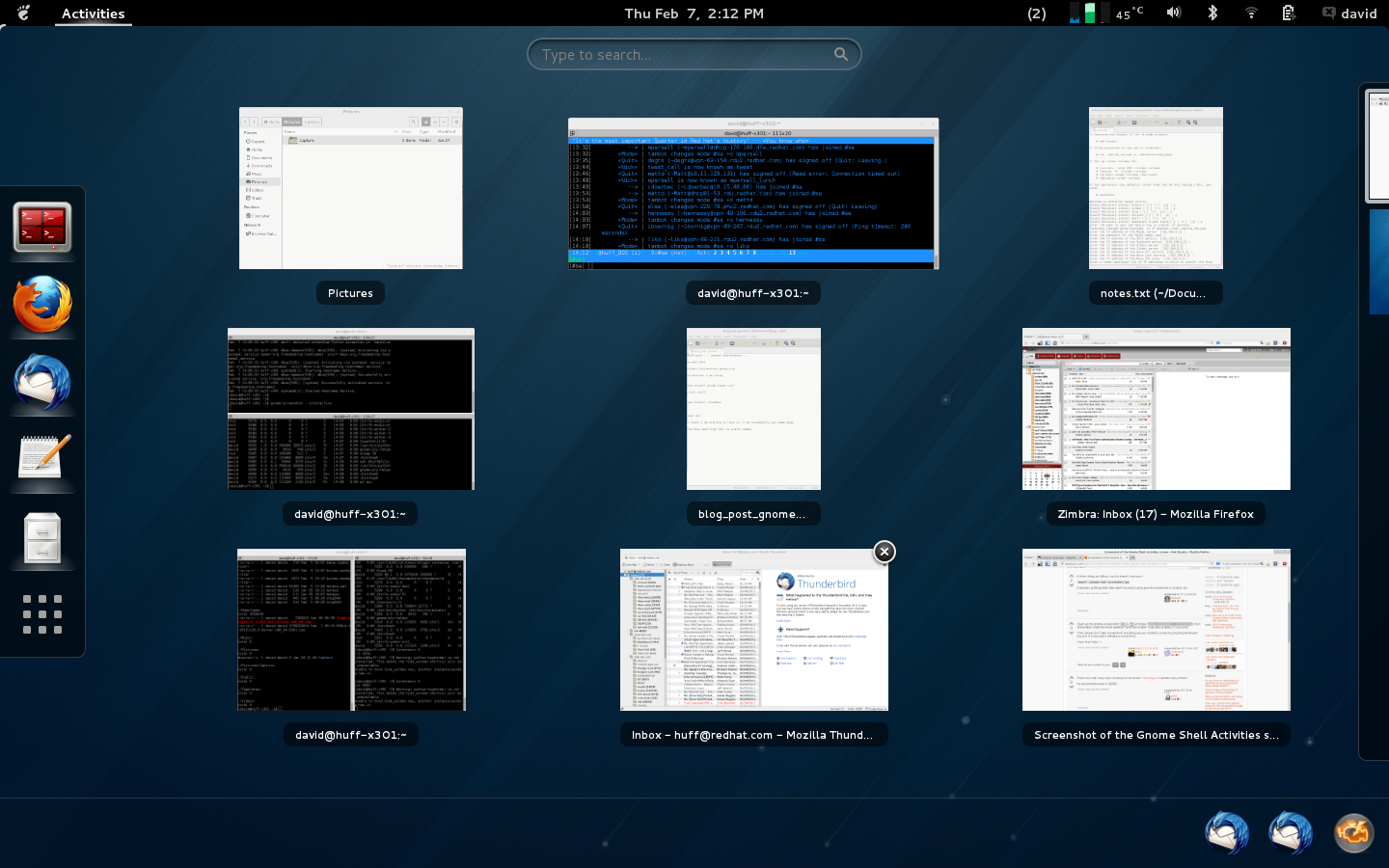
Gnome 3 on Fedora showing off the Activity View (image credit: Huffisland)
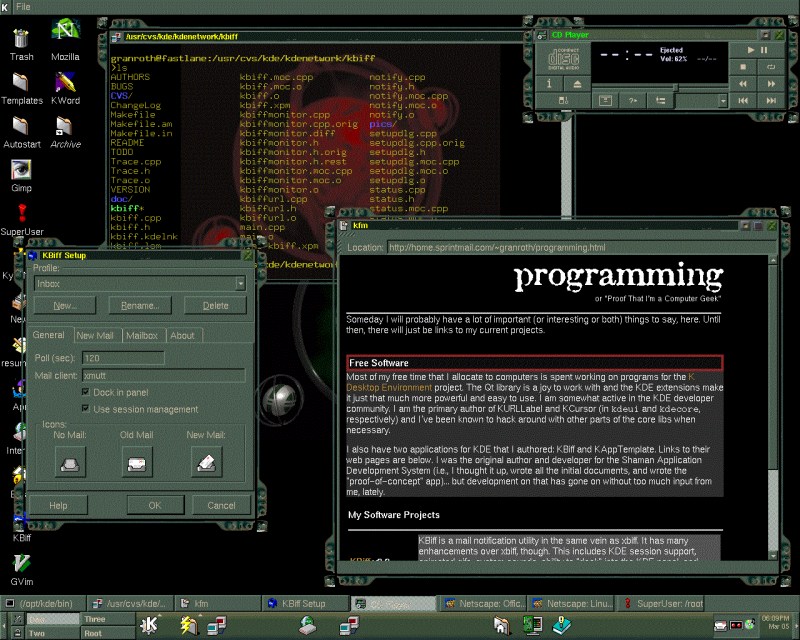
KDE 1 showing a user-customized appearance with a dark theme (image credit: KDE)
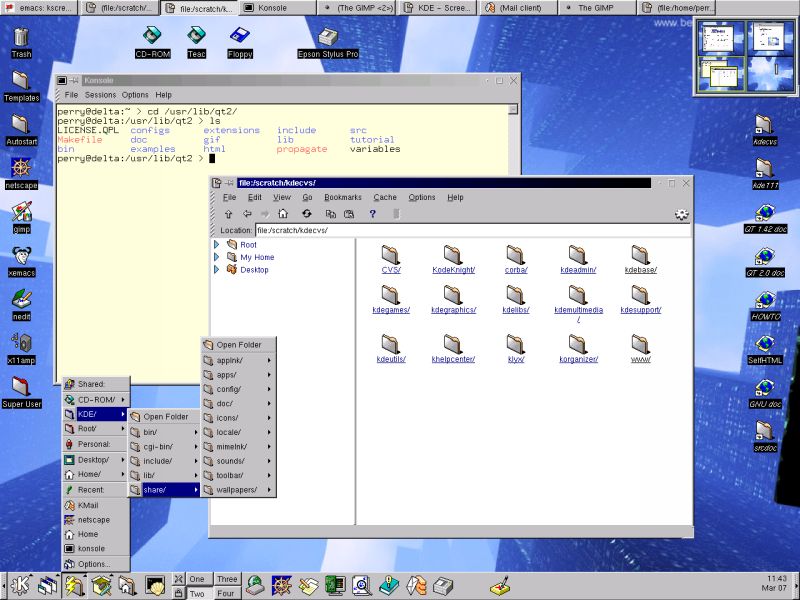
KDE 1 showing a user-customized theme mimicking a traditional Windows-like appearance (image credit: KDE)
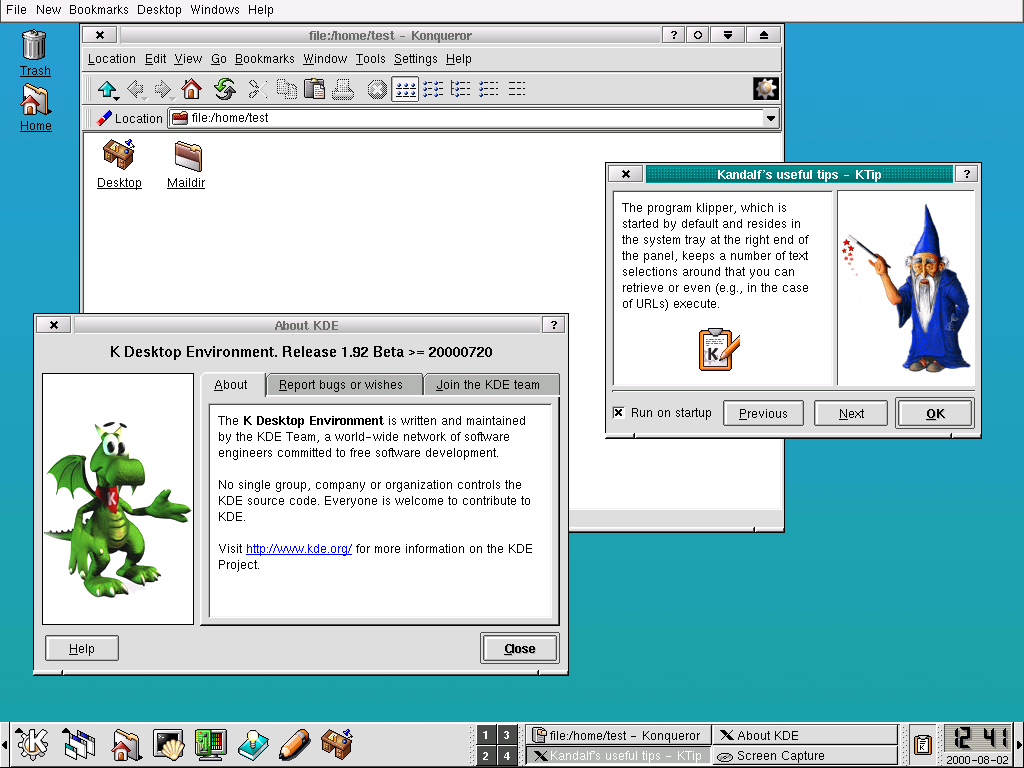
Out-of-the-box, plain, vanilla KDE 2 with no modifications. (image credit: KDE)
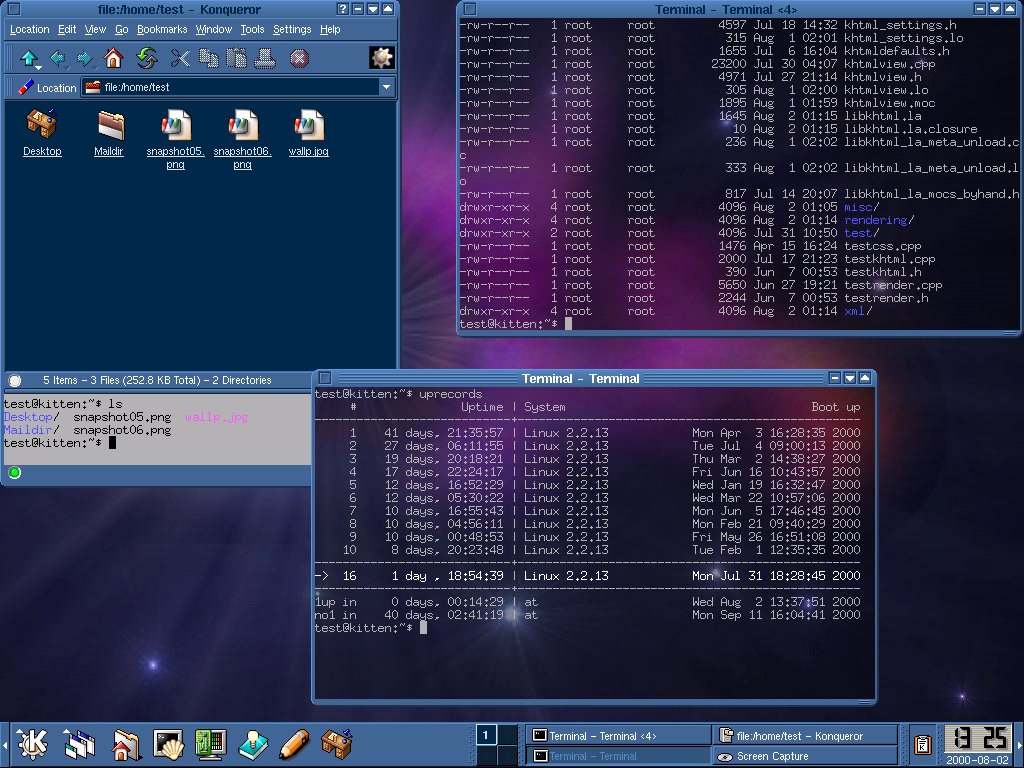
KDE 2 showing off a customized theme with transparency and color customization. Things started to get interesting with customization at this point in time (image credit: KDE)
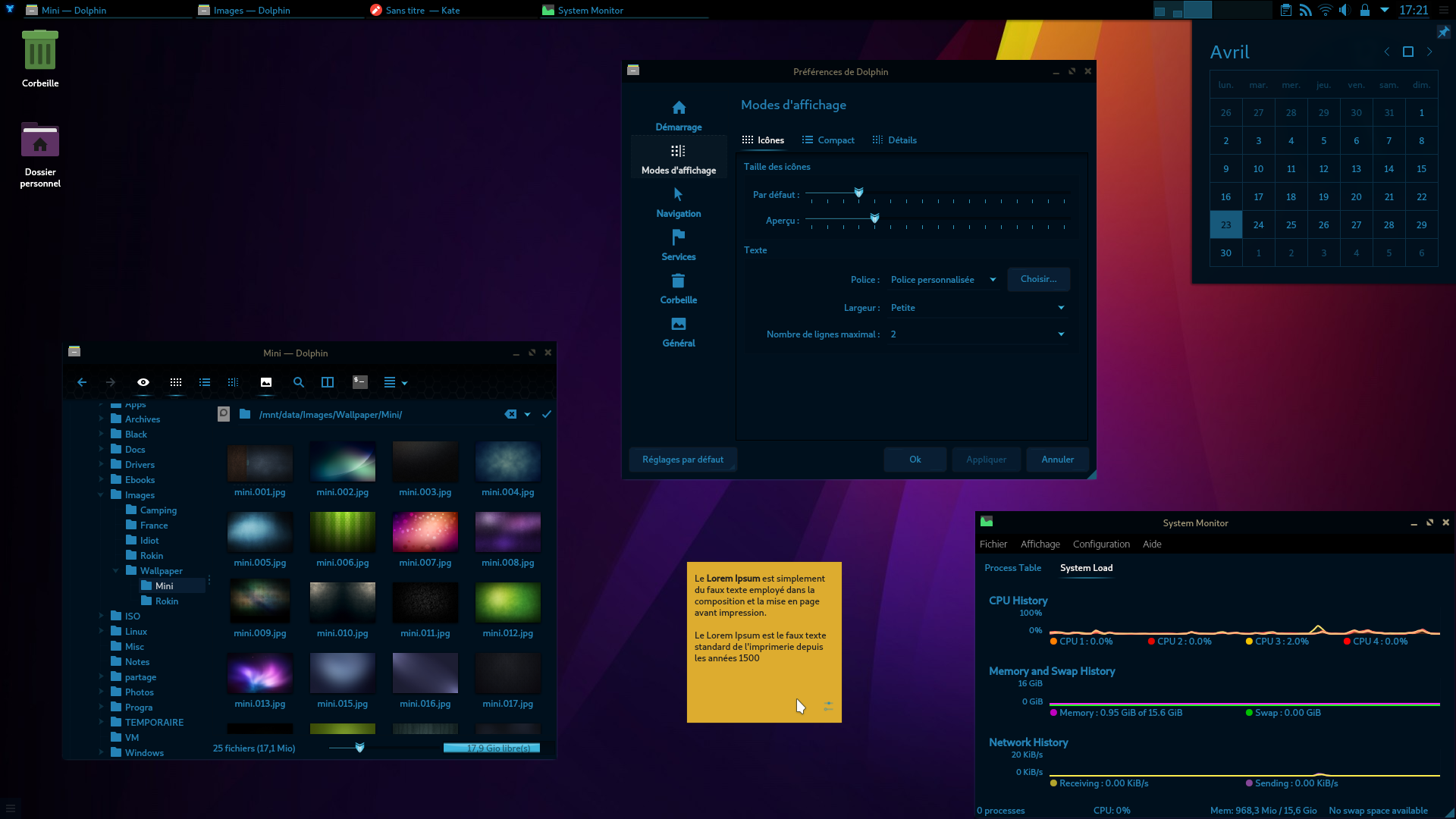
Skipping ahead a few versions is KDE 5 with a Starcraft theme. Thanks to hubs for customization, like KDE-Look, there are endless possibilities.(image credit: KDE-Look)
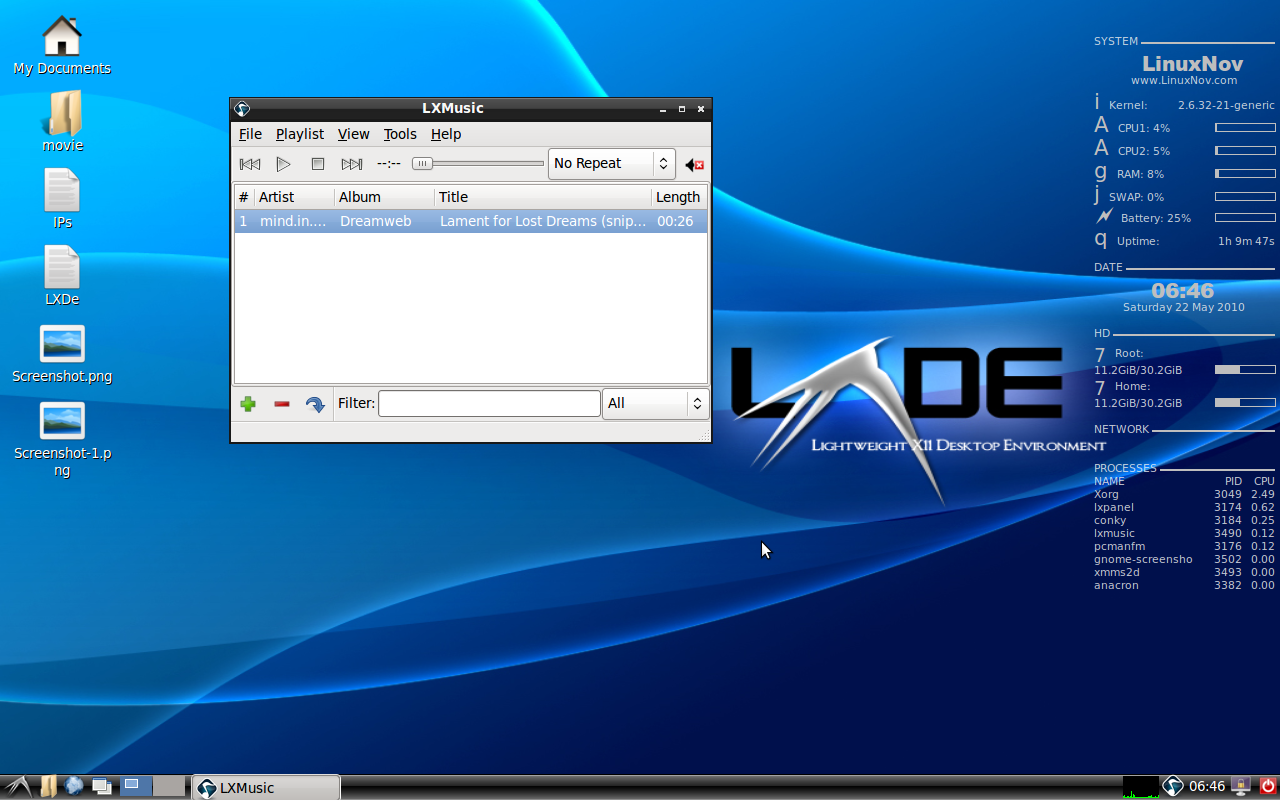
LXDE is a fairly lightweight desktop environment which has gained a lot in the look-and-feel department lately. (image credit: Linuxnov)
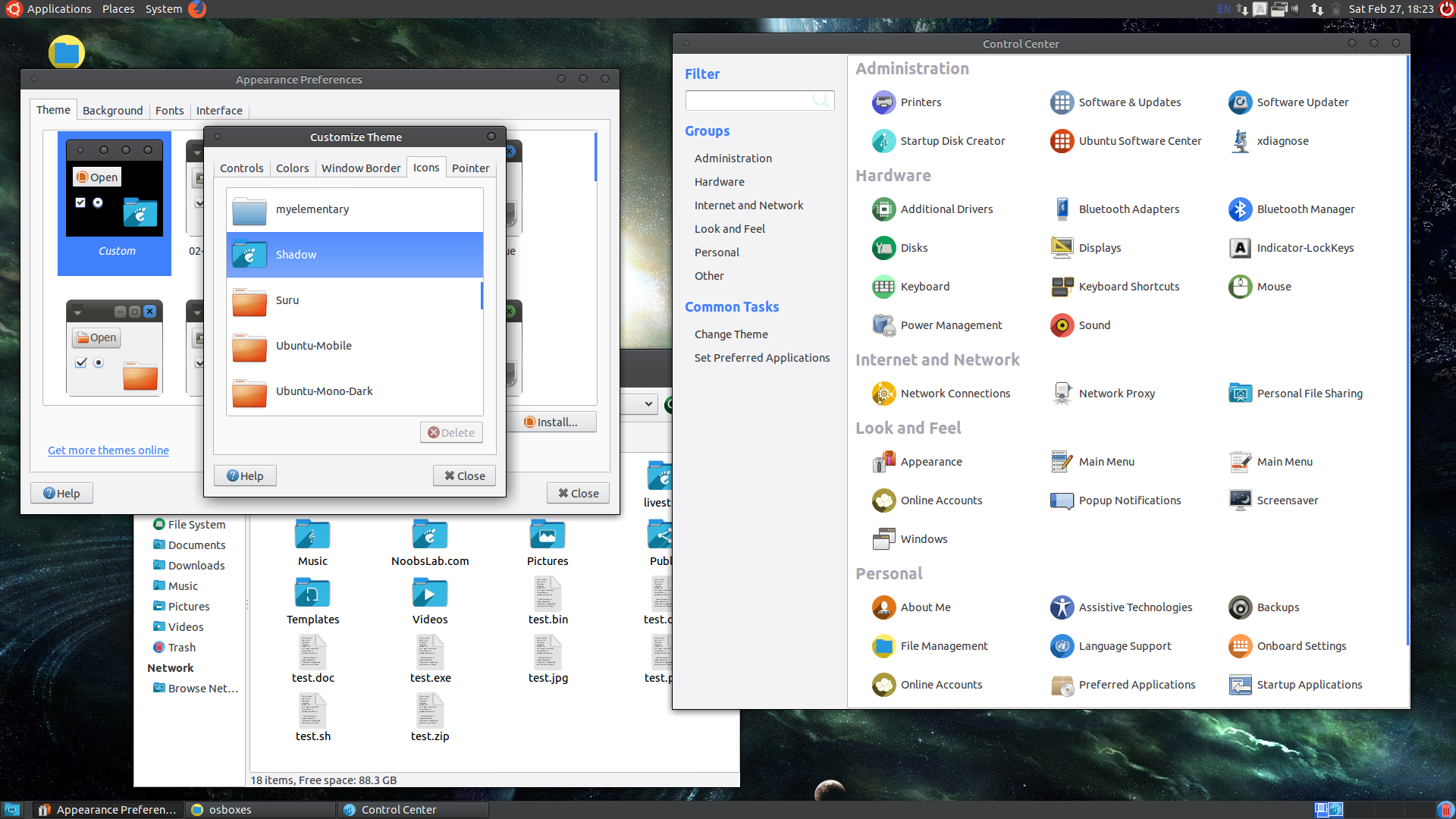
The MATE desktop has a more traditional look, based on Gnome 2. It has been cleaned up and refreshed since the original Gnome 2 days and is the preferred desktop of longtime Linux users. (image credit: Noobs Lab)

The now-defunct Unity desktop was Ubuntu's default desktop environment between October of 2011 and April of 2017. When it was originally released, it was highly polarizing. Some users lauded its new features and clean look while others found it intrusive and ugly. Regardless of users' opinions, though, it has been discontinued. (image credit: AskUbuntu)